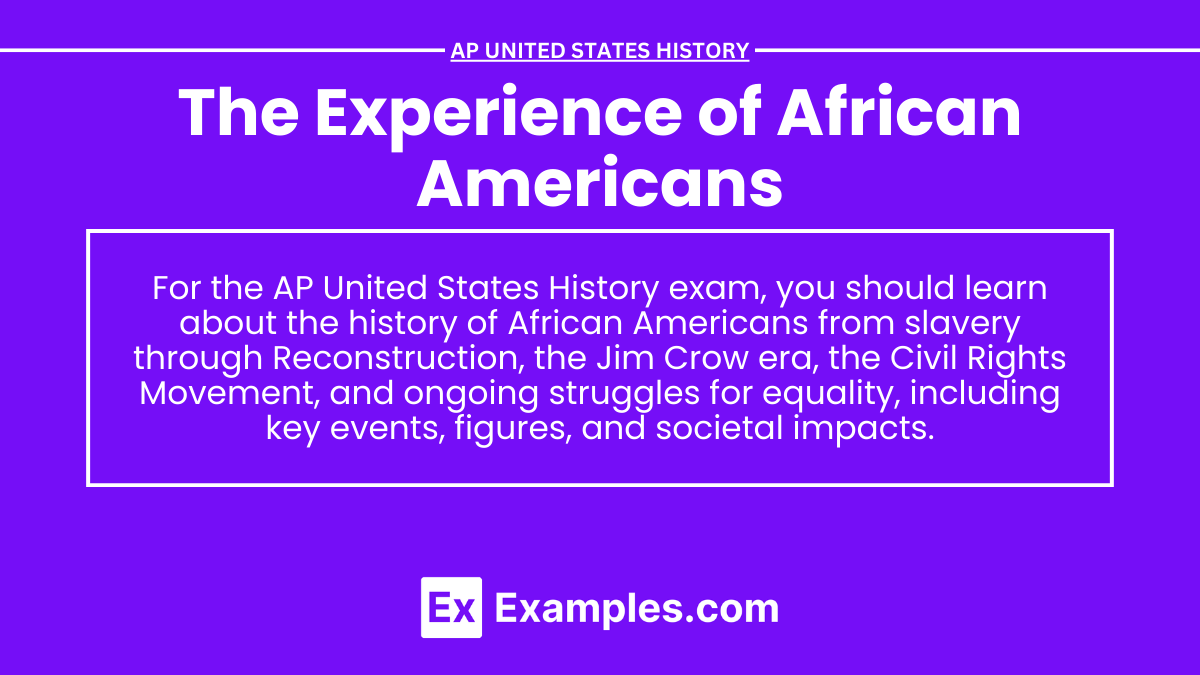In AP United States History, the experience of African Americans is a central theme that reflects the profound challenges and contributions of a community that has shaped the nation’s history. From the brutal realities of slavery and the struggles of the Reconstruction era to the fight against Jim Crow segregation and the achievements of the Civil Rights Movement, African Americans have continually resisted oppression while advocating for equality and justice. Their experiences highlight the enduring quest for civil rights and the ongoing impact of systemic racism in America.
Learning Objectives
In studying the experience of African Americans, you will be expected to understand the historical challenges faced by African Americans, including slavery, segregation, and systemic racism. The contributions of African Americans to social, cultural, and political developments will be analyzed. The impact of key events, such as the Civil Rights Movement, on American society will be examined. Additionally, the ongoing struggle for equality and the role of African Americans in shaping the nation’s history will be explored.
Slavery in America (1619-1865)
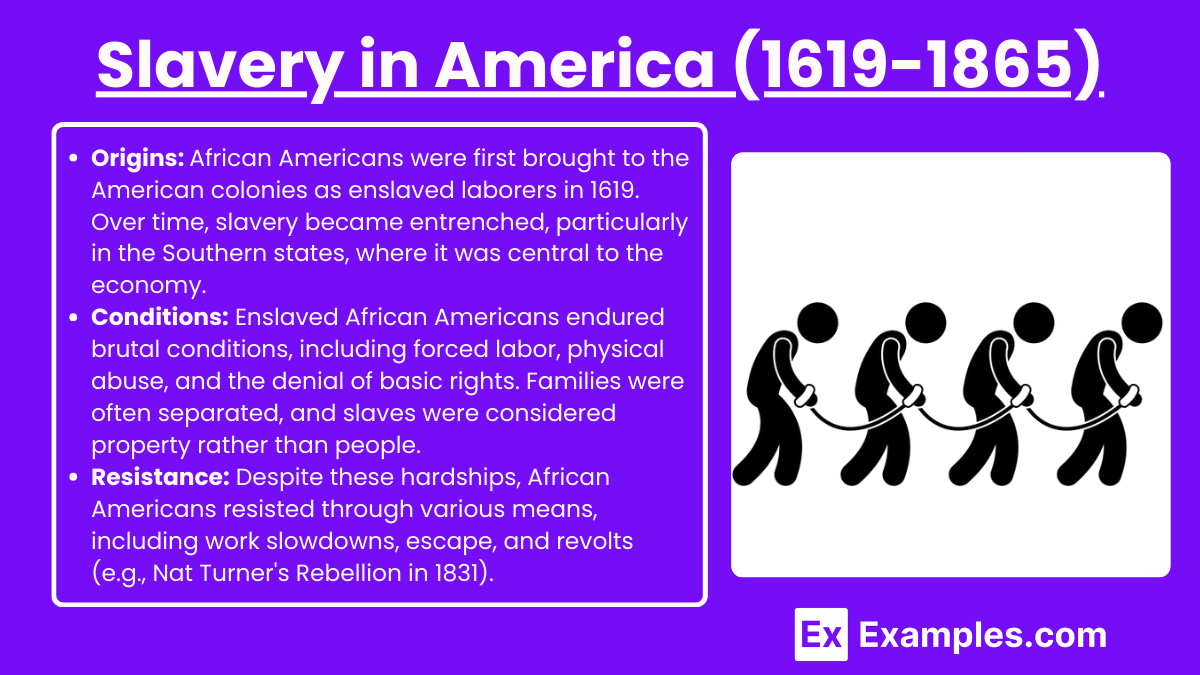
Origins: African Americans were first brought to the American colonies as enslaved laborers in 1619. Over time, slavery became entrenched, particularly in the Southern states, where it was central to the economy.
Conditions: Enslaved African Americans endured brutal conditions, including forced labor, physical abuse, and the denial of basic rights. Families were often separated, and slaves were considered property rather than people.
Resistance: Despite these hardships, African Americans resisted through various means, including work slowdowns, escape, and revolts (e.g., Nat Turner’s Rebellion in 1831).
Emancipation and Reconstruction (1863-1877)
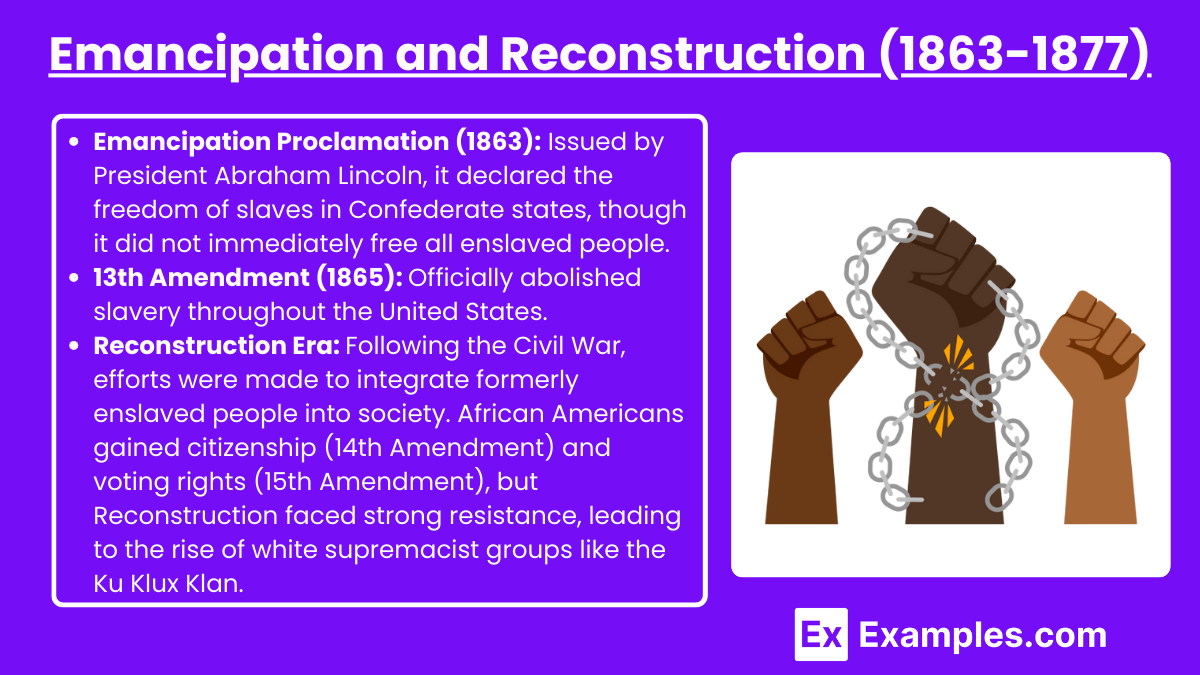
Emancipation Proclamation (1863): Issued by President Abraham Lincoln, it declared the freedom of slaves in Confederate states, though it did not immediately free all enslaved people.
13th Amendment (1865): Officially abolished slavery throughout the United States.
Reconstruction Era: Following the Civil War, efforts were made to integrate formerly enslaved people into society. African Americans gained citizenship (14th Amendment) and voting rights (15th Amendment), but Reconstruction faced strong resistance, leading to the rise of white supremacist groups like the Ku Klux Klan.
Segregation and Jim Crow (1877-1950s)
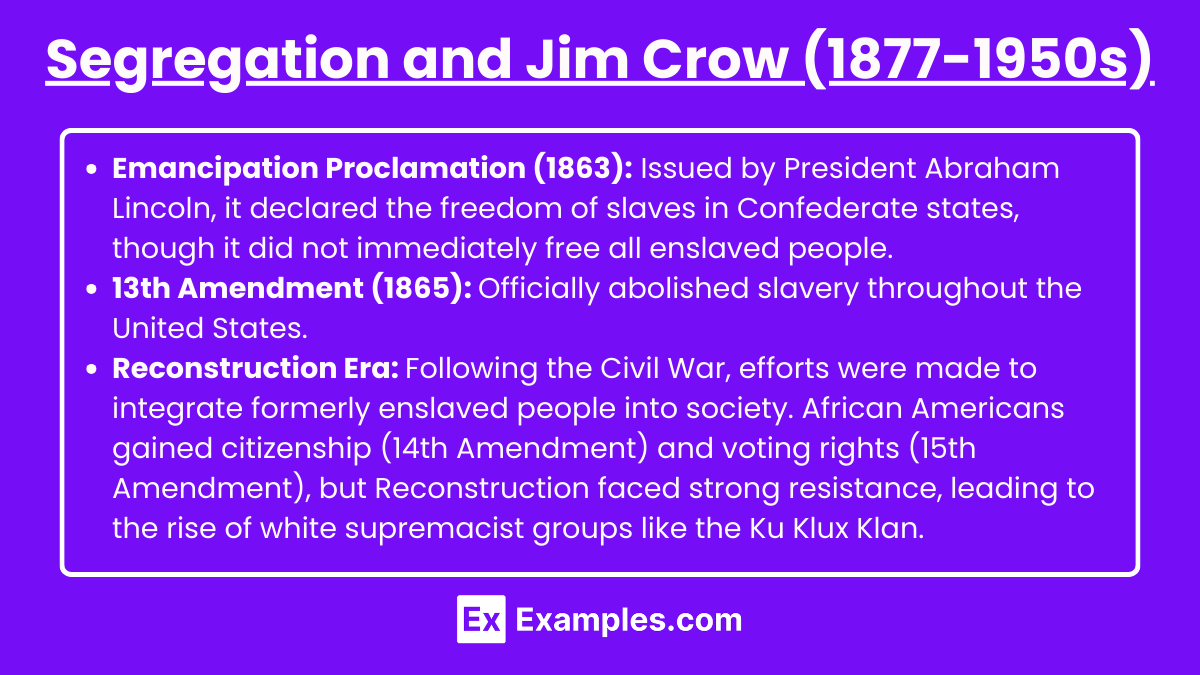
Jim Crow Laws: Enforced racial segregation in the South, denying African Americans equal access to public facilities, education, and employment.
Plessy v. Ferguson (1896): The Supreme Court upheld segregation under the “separate but equal” doctrine, legitimizing widespread discrimination.
Great Migration: Between 1916 and 1970, millions of African Americans moved from the rural South to urban areas in the North and West, seeking better opportunities and escaping Jim Crow laws.
Civil Rights Movement (1950s-1960s)
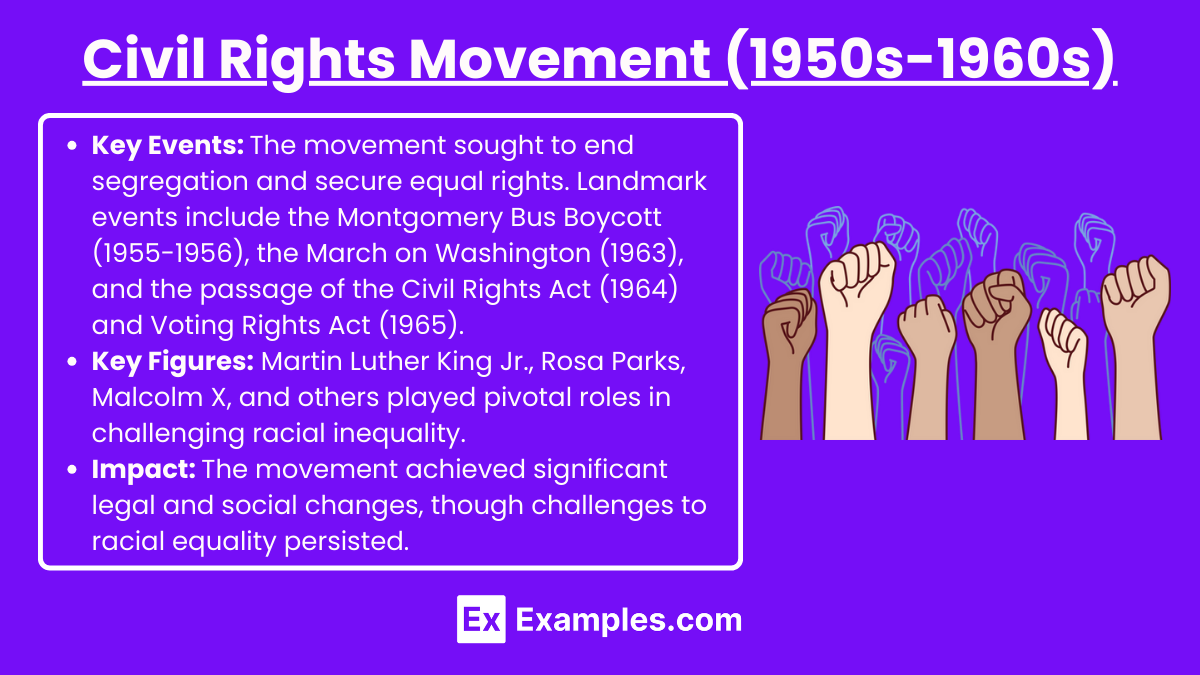
Key Events: The movement sought to end segregation and secure equal rights. Landmark events include the Montgomery Bus Boycott (1955-1956), the March on Washington (1963), and the passage of the Civil Rights Act (1964) and Voting Rights Act (1965).
Key Figures: Martin Luther King Jr., Rosa Parks, Malcolm X, and others played pivotal roles in challenging racial inequality.
Impact: The movement achieved significant legal and social changes, though challenges to racial equality persisted.
Post-Civil Rights Era (1970s-Present)

Ongoing Struggles: Despite progress, African Americans continue to face systemic racism, economic inequality, and challenges in areas like education, criminal justice, and voting rights.
Cultural Contributions: African Americans have made profound contributions to American culture, particularly in music, literature, and the arts.
Black Lives Matter Movement: In response to ongoing police brutality and racial injustice, the Black Lives Matter movement emerged in the 2010s, advocating for an end to systemic racism and violence against African Americans.
Key Themes and Impacts
- Resistance and Resilience: Throughout history, African Americans have resisted oppression and fought for their rights, often at great personal risk.
- Legal and Social Change: African American activism has led to significant legal changes, including the abolition of slavery, civil rights legislation, and desegregation.
- Cultural Influence: African American culture has had a profound impact on American society, from jazz and blues to literature and political thought.
- Ongoing Challenges: The fight for equality continues, with issues such as police brutality, economic disparity, and voter suppression remaining central concerns.
Examples
- Nat Turner’s Rebellion (1831): A significant slave uprising that heightened tensions between the North and South over the issue of slavery.
- Harlem Renaissance (1920s): A cultural movement where African American artists, writers, and musicians celebrated Black identity and creativity.
- Brown v. Board of Education (1954): The Supreme Court decision that overturned Plessy v. Ferguson, declaring segregation in public schools unconstitutional.
- Montgomery Bus Boycott (1955-1956): A successful protest against segregation on public buses, leading to the rise of the civil rights movement.
- Black Lives Matter Movement (2013-Present): A modern movement advocating for justice and equality in response to systemic racism and police violence.
MCQs
- Which amendment abolished slavery in the United States?
- A) 13th Amendment
- B) 14th Amendment
- C) 15th Amendment
- D) 19th Amendment
Explanation: The 13th Amendment, ratified in 1865, abolished slavery in the United States, marking a significant milestone in American history. - The “Great Migration” refers to:
- A) The movement of African Americans from the rural South to urban North
- B) The westward expansion of settlers in the 19th century
- C) The forced relocation of Native Americans to reservations
- D) The migration of European immigrants to the United States
Explanation: The Great Migration involved millions of African Americans moving from the rural South to urban areas in the North and West, seeking better opportunities and escaping Jim Crow laws. - Which Supreme Court case declared segregation in public schools unconstitutional?
- A) Dred Scott v. Sandford
- B) Plessy v. Ferguson
- C) Brown v. Board of Education
- D) Roe v. Wade
Explanation: Brown v. Board of Education (1954) overturned the “separate but equal” doctrine, ruling that segregation in public schools was unconstitutional.

